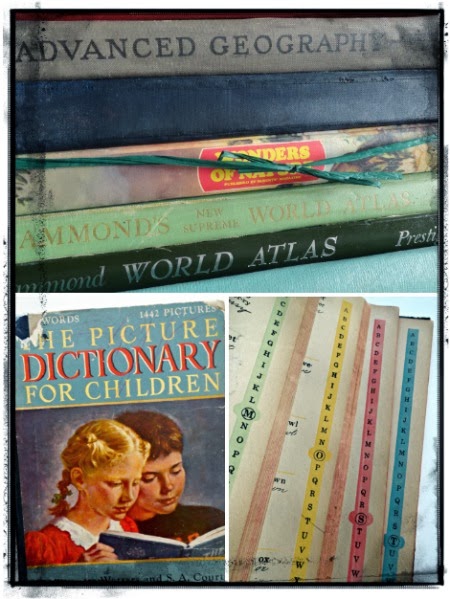A mysterious alchemy occurs when a book is altered. Suddenly, an object that was destined for the landfill is transformed into a piece of art and rescued from oblivion. Altering a book simply means changing its appearance or structure into something new using a variety of media and techniques. An altered book can be torn, painted, burned, collaged, have pages removed or added, or even be cut into an entirely different shape.

I fell in love with altered books many years ago, but I still hesitate a bit before I start a new one. I am passionate about books, and love and respect them deeply. That means that ripping them apart or marking in them with ink or paint can feel a bit strange! The end result is very satisfying though, and I prefer to believe that I'm rescuing books rather than destroying them. I choose the books that I alter very thoughtfully, and of course I would never use a rare edition, or valuable book. Instead, I focus on books that are tattered, worn, outdated, or no longer useful.
Choosing a book for altering is an adventure! I love digging through antique shops, thrift stores, rummage sales, or library sales for books that I can use for collage, handmade journals, or for altering into art. To make it easier for you to choose your own books for altering here are four basic criteria to consider, and a couple more suggestions for types of books to use.
Size is the first factor we'll consider. Larger books obviously provide a bigger canvas for your techniques and art work. Atlases, outdated textbooks, and children's encyclopedias are some fun examples of these types of books. I love the children's book shown above that I found at an antique store recently. The charming illustrations on the cover and the colorful pages are perfect for altering. Large books have lots of potential, but smaller books are more portable and easier to display and store. Both have their place depending on the project at hand.
Ah...Reader's Digests! If you're a bit concerned about altering a book, these are the ideal choice for you. They're inexpensive and readily available at the sources I mentioned, or even online at sites like ebay. Reader's Digests often have lovely covers and end papers that can serve as beautiful backgrounds for your art. These books were mass produced so there's no need to feel guilty about using one as a creative base.
A second way to select a book is by color. I'm especially drawn to books that have white, cream, blue, or green covers, so I have quite a few of those in my collection. Color doesn't have to be a consideration however, because any book you find can be altered with paint, paper, or other media.
Collecting books by theme is a third and especially fun way to choose a book. Gathering books this way insures that you will have plenty of text and images for your art that reflect your interests. I can't pass up a book about birds, and I recently started looking for books about sailing. I enjoy using both these themes as motifs for collage, sketching, and painting. I also enjoy books about gardening, travel, vintage cookbooks, and music. Look for books that cover topics you are interested in, and they will be a pleasure to alter.

A fourth way to choose a book is to use one that has personal meaning for you. You may be drawn to a book for its title, subject matter, illustrations, the cover art, or even a childhood favorite. Of course, you can use your own treasured book, but I sometimes prefer to find another copy for altering. I've had the two books shown above since I was about 10. So even though they bear my daughter's name and would make a sweet journal for her, I may decide to find another copy and keep these as mementos. Children's classics are usually inexpensive and easy to find at used book stores or antique shops.
A wonderful type of book to consider for altering is the dictionary. They're available in a variety of sizes, colors, languages, and formats. Dictionaries contain loads of text and even images interspersed throughout their pages. Choose a page to alter that has a word or definition that pertains to your art work for adding depth and meaning.
Children's board books are another fun option to consider. Search dollar stores or yard sales for inexpensive copies. These books often have interactive elements like flaps, pockets, spinners, or fold-outs that can make your altered book interesting and unique.
When it comes to altering books the sky's the limit! I hope you enjoyed this glimpse into what I've learned about choosing books for altering. Next month, I'll share techniques for preparing books to be altered and some fun backgrounds to get you started. March has been declared Altered Books Month, here on the
Altered Arts Magazine Blog, so be sure to pop by throughout the month for more inspiration and ideas from all the design team members.
Make art...be happy!
Kimberly








.JPG)









.jpg)

.jpg)

























.jpg)
.jpg)
.jpg)